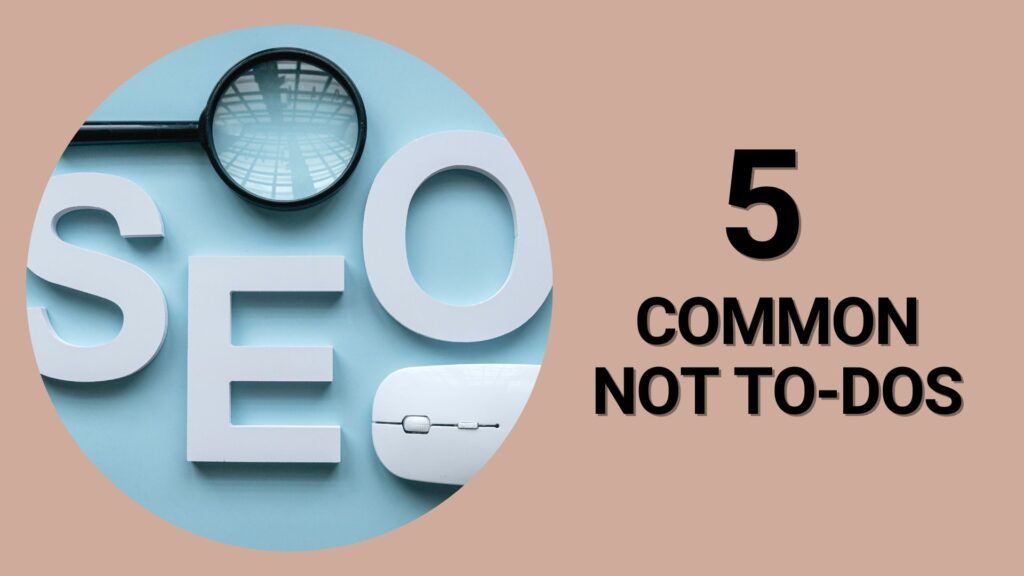Expecting your article SEO for better SERP rank but not finding the drawbacks where to treat the things you're perhaps doing repeatedly. Here's what I emphasizing to retreat some specific things for the purposive result.
SEO, or Search Engine Optimization, is the practice of optimizing a website to improve its visibility and ranking on search engine result pages (SERPs). SEO is crucial for increasing organic traffic to a website and ultimately, improving its online presence and reach.
What is SEO?
SEO, or search engine optimization, is the process of improving a website's visibility on search engine results pages.
It encompasses various strategies such as keyword research, content optimization, link building, and technical enhancements to boost a website's ranking and attract organic traffic.
For businesses looking to enhance their online presence and attract more visitors to their websites, understanding what SEO is and how it works is essential.
How Does SEO Affect SERP Rank?
- Keyword Optimization: Strategically incorporate relevant keywords in content and meta tags to improve SERP rank.
- Quality Backlinks: Obtain high-quality backlinks from reputable sites to boost SEO performance.
- Mobile-Friendly Website: Ensure your website is optimized for mobile devices to increase visibility.
- Content Quality: Produce valuable, engaging content to attract organic traffic and improve SERP rank.
Fact: Studies have shown that websites ranking on the first page of Google search results receive 91.5% of total traffic.
The Common Mistakes in SEO On The Trending Technology
The Most Common Mistakes in SEO Work And What To Do
In the competitive world of SEO, every small mistake can cost you valuable rankings on the search engine results page (SERP).
As an SEO professional, it is important to be aware of common mistakes that can hinder your efforts to improve your website's ranking.
In this section, we will discuss five common mistakes to avoid in SEO work: keyword stuffing, duplicate content, ignoring mobile optimization, not utilizing meta tags and descriptions, and neglecting user experience.
By avoiding these mistakes, you can improve your chances of achieving a high SERP rank.
Mistake#1: Keyword Stuffing
Overusing keywords unnaturally can result in penalties from search engines and negatively impact a website's ranking.

Avoid keyword stuffing
To-Dos:
- Avoid excessive repetition of keywords within content solely for search engine ranking purposes, known as 1. Keyword Stuffing.
- Focus on creating valuable, informative content for users rather than overloading with keywords.
- Use synonyms and natural language to maintain a balanced keyword presence without sacrificing content quality.
- Ensure keyword density is reasonable and aligns with search engine guidelines for optimal SEO performance.
Duplicate content is like a bad movie sequel - it's unoriginal and no one wants to see it twice, especially not Google.
Mistake#2: Duplicate Content
Plagiarized content or multiple pages with the same content can harm a website's credibility and ranking.
Duplicate content can harm your website's search engine rankings and visibility, but you can mitigate this risk by following these steps.

Avoid duplicate content
To-Dos:
- Use 301 redirects to direct traffic to the original content.
- Consolidate similar pages to create one authoritative version.
- Employ canonical tags to indicate the preferred version of a page.
- Ensure each page offers unique value and insights.
To prevent the negative impact of 2. duplicate content, regularly audit your site and utilize these strategies for improved search engine performance.
Mistake#3: Ignoring Mobile Optimization
With the rise of mobile usage, ignoring mobile optimization can lead to a poor user experience and lower rankings on mobile searches.

Improve mobile SEO gradually
To-Dos:
- Ensure that all website elements are mobile-responsive.
- Compress images and utilize optimized formats such as WebP to improve loading speed on mobile devices.
- Implement Accelerated Mobile Pages (AMP) to create a faster and more efficient mobile browsing experience.
- Utilize responsive design to adapt to different screen sizes and orientations.
- Optimize content for voice search and local mobile searches to improve user experience.
Mistake#4: Not Utilizing Meta Tags and Descriptions
Meta tags and descriptions provide important information to search engines and can improve a website's visibility in SERPs.

Utilize the meta optimization process
To-Dos:
- Learn the importance of meta tags and descriptions in SEO for better SERP rank.
- Conduct thorough research to identify relevant keywords for each page.
- Craft unique and captivating meta titles and descriptions for every web page.
- Optimize meta tags and descriptions with carefully selected keywords, accurately reflecting the content.
- Consistently review and update meta tags and descriptions to align with changing content and SEO strategies.
Mistake#5: Neglecting User Experience
A website that is difficult to navigate or has a slow loading speed can result in a poor user experience and negatively impact its ranking.

UX is a part of the SEO today
To-Dos:
- Long loading times and slow website performance can have a direct impact on user experience.
- Complicated website navigation can be frustrating for users, potentially leading to higher bounce rates.
- Ignoring mobile responsiveness can hinder user experience and negatively affect SERP rank.
- Poor quality content and irrelevant information can fail to effectively engage users.
- Pop-ups and intrusive ads can disrupt user interaction and diminish the overall user experience.
To Avoid Those Mistakes
In terms of better SEO for better SERP rank, it is obvious to avoid those mistakes, and follow best practices in SEO work, such as:
- Conducting Keyword Research: Properly researching and selecting relevant keywords can improve a website's ranking and attract the right audience.
- Creating High-Quality Content: Quality content that is informative, engaging, and optimized can improve a website's authority and visibility in search engine results.
- Building Quality Backlinks: Backlinks from reputable websites can improve a website's credibility and authority, leading to better rankings.
- Optimizing for Mobile: With more searches being conducted on mobile devices, it is crucial to ensure a website is optimized for a seamless mobile experience.
- Utilizing Meta Tags and Descriptions: Including relevant meta tags and descriptions can improve a website's visibility and attract more clicks from search results.
- Improving User Experience: A user-friendly and well-designed website can improve user experience and increase the chances of visitors staying on the site and engaging with its content.
In addition to these best practices, staying up to date with the latest trends in SEO is important for success in SERP rankings. Some current trends include:
- Voice Search Optimization: With the rise of voice assistants, optimizing for voice search queries can improve a website's visibility in search results.
- User Intent Optimization: Focusing on satisfying user intent rather than just targeting keywords can lead to better rankings and user engagement.
- Video and Image Optimization: Visual content is becoming increasingly popular, and optimizing videos and images can improve a website's visibility in search results.
- Local SEO: For businesses targeting a local audience, optimizing for local search queries can greatly impact their rankings in specific locations.
- Featured Snippets: These are select pieces of content that appear at the top of search results, providing quick and relevant information to users. Optimizing for featured snippets can result in better visibility and higher click-through rates.
What Are the Best Practices for SEO Work?
To achieve a higher ranking on search engine result pages (SERPs), it is essential to follow best practices in SEO work. These practices not only increase visibility and traffic to your website but also improve overall user experience.
Let's delve into the key components of effective SEO work by discussing the top practices, including conducting thorough keyword research, creating high-quality content, building quality backlinks, optimizing for mobile, utilizing meta tags and descriptions, and improving user experience.
By implementing these strategies, you can see significant improvements in your SERP ranking.
Practice#1: Conducting Keyword Research
- Conduct thorough research on the business niche and target audience to effectively identify keywords.
- Utilize various tools such as Google Keyword Planner, SEMrush, or Ahrefs to analyze the search volume and competition for keywords.
- Identify long-tail keywords and semantic variations to capture specific search queries.
- Analyze the relevance and intent of keywords to ensure alignment with content and user search behavior.
- Regularly review and update the keyword strategy to adapt to changing search trends and user behavior.
Practice#2: Creating High-Quality Content
- Research: Identify relevant topics and keywords, including the importance of creating high-quality content.
- Originality: Create unique, valuable, and engaging content that stands out from the rest.
- Structure: Organize content with headings, subheadings, and bullet points to improve readability and flow.
- Clarity: Ensure clear and concise writing to effectively convey information to readers.
- Visuals: Incorporate images, videos, and infographics to enhance and support the content being presented.
Practice#3: Building Quality Backlinks
- Learn about the significance of backlinks in SEO.
- Research high-authority websites relevant to your niche.
- Generate engaging and pertinent content for guest posting or link insertion.
- Contact webmasters or bloggers for potential collaboration opportunities.
- Make sure the backlinks come from a variety of sources and provide value to the audience.
Don't be a dinosaur, optimize for mobile, or risk becoming extinct on the SERP.
Practice#4: Optimizing for Mobile
- Responsive Design: Ensure the website layout adjusts seamlessly to different devices.
- Page Speed: Optimize images, minimize redirects, and leverage browser caching for swift loading.
- Mobile-Friendly Content: Create concise, scannable content, and use font sizes suitable for mobile viewing.
- App Integration: Develop a user-friendly app for enhanced mobile experience.
- SEO-Friendly URLs: Use simple, descriptive URLs for better mobile search visibility.
To achieve optimal mobile optimization, it is crucial to prioritize user experience, swift loading times, and easy navigation to boost SERP rankings.
Practice#5: Utilizing Meta Tags and Descriptions
- Create one-of-a-kind and captivating meta descriptions for each page, incorporating relevant keywords and a strong call to action.
- Incorporate meta tags that accurately depict the content and purpose of the webpage.
- Utilize structured data to provide search engines with specific information about the content on your webpage.
Pro-tip: Continuously review and update your meta tags and descriptions to align with current search trends and user behavior.
Practice#6: Improving User Experience
- Page Speed: Ensure fast loading times for web pages.
- Mobile Optimization: Prioritize responsive design and user-friendly mobile experience for improving user experience.
- Quality Content: Provide relevant, valuable, and engaging content to enhance user experience.
- Clear Navigation: Create an intuitive site structure and easy navigation to improve user experience.
- Visual Appeal: Use appealing design, images, and videos for enhanced user engagement and improved user experience.
Keep up with the latest trends in SEO or risk getting left behind on the second page of Google.
What Are the Latest Trends in SEO?
As SEO continues to evolve, staying on top of the latest trends is crucial for maintaining a high SERP rank. In this section, we will discuss the most recent developments in SEO and how they can impact your website's visibility.
From optimizing for voice search to understanding user intent, we'll cover the key techniques and strategies that will help you stay ahead of the competition.
So, let's dive into the latest trends in SEO and see how they can improve your website's search engine ranking.
Trend#1: Voice Search Optimization
- Understand Voice Search: Comprehend the impact of natural language and long-tail keywords on optimizing for voice search queries.
- Long-Tail Keywords: Target specific long-tail keywords that mimic conversational language for better optimization in voice search.
- Content Optimization: Adapt content to effectively and concisely answer voice search queries.
- Local SEO: Optimize for local intent, as voice searches often have local intent for businesses and services.
- Structured Data Markup: Implement structured data to help search engines understand and display your content for voice search results.
Forget about tricking Google, focus on satisfying user intent for top rankings and happy users.
Trend#2: User Intent Optimization
- Understand user intent by analyzing queries to comprehend what users seek.
- Create content aligning with User Intent Optimization, addressing specific needs, and providing valuable answers.
- Optimize keywords based on User Intent Optimization, focusing on informational, navigational, transactional, or commercial investigation queries.
- Utilize structured data to enhance search results for User Intent Optimization, improving visibility and relevance.
- Continually refine content to match evolving User Intent Optimization trends and preferences.
Don't underestimate the power of visual content, it's not just for Instagram, it's also a key aspect of SEO and SERP ranking.
Trend#3: Video and Image Optimization
- Compress images and videos without sacrificing quality to improve page load speed.
- Include descriptive file names and alt text for images and videos to enhance accessibility and keyword relevance.
- Utilize structured data markup to provide search engines with context about your visual content.
Pro-tip: Optimize video and image file sizes while maintaining quality to boost website loading speed, improve user experience, and enhance SEO performance.
Forget about traveling, with local SEO, you can reach customers in your area without leaving your couch.
Trend#4: Local SEO
- Understand the algorithms used in local search and prioritize having a Google My Business listing.
- Optimize your website and content by using local keywords and location-based phrases.
- Make sure that your NAP (Name, Address, Phone number) is consistent across all online platforms.
- Encourage customers to leave reviews and participate in local community events or sponsorships.
- Create web pages specific to your location and utilize structured data markup to provide local business information.
Trend#5: Featured Snippets
- Optimize Content: Craft concise, informative answers to commonly asked questions.
- Structured Data: Use schema markup to help search engines understand your content.
- Target Long-Tail Keywords: Identify and include specific phrases that people are likely to use in searches.
- Improve Page Load Speed: Ensure your page loads quickly to enhance user experience and SEO ranking.
- Utilize Subheadings: Break content into sections with clear subheadings for easy readability.
Featured snippets, also known as "position zero" results, were introduced by Google in 2014 to provide quick, relevant answers to user queries directly on the search results page.
This enhances user experience and increases site visibility, making it important for websites to optimize for featured snippets.
Conclusion
A comprehensive SEO for better SERP rank always follows a significant set of rules. Whether you're striving to be a super publisher in affiliate marketing or a content marketing geek of your personal digital products online, avoiding typical SEO errors is necessary for a higher SERP rank. Then, your site's performance might be hampered by keyword stuffing, duplicating content, disregarding meta tags, mobile optimization, and user experience.
Improved search engine exposure is possible if you avoid these mistakes. To improve your website's position in search engine results and, eventually, drive organic traffic and establish a favorable online presence, concentrate on high-quality content, mobile friendliness, and user pleasure.

